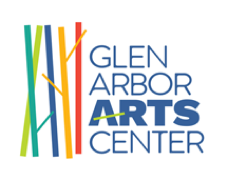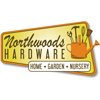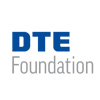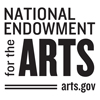
Creativity Q+A with Colleen Kole
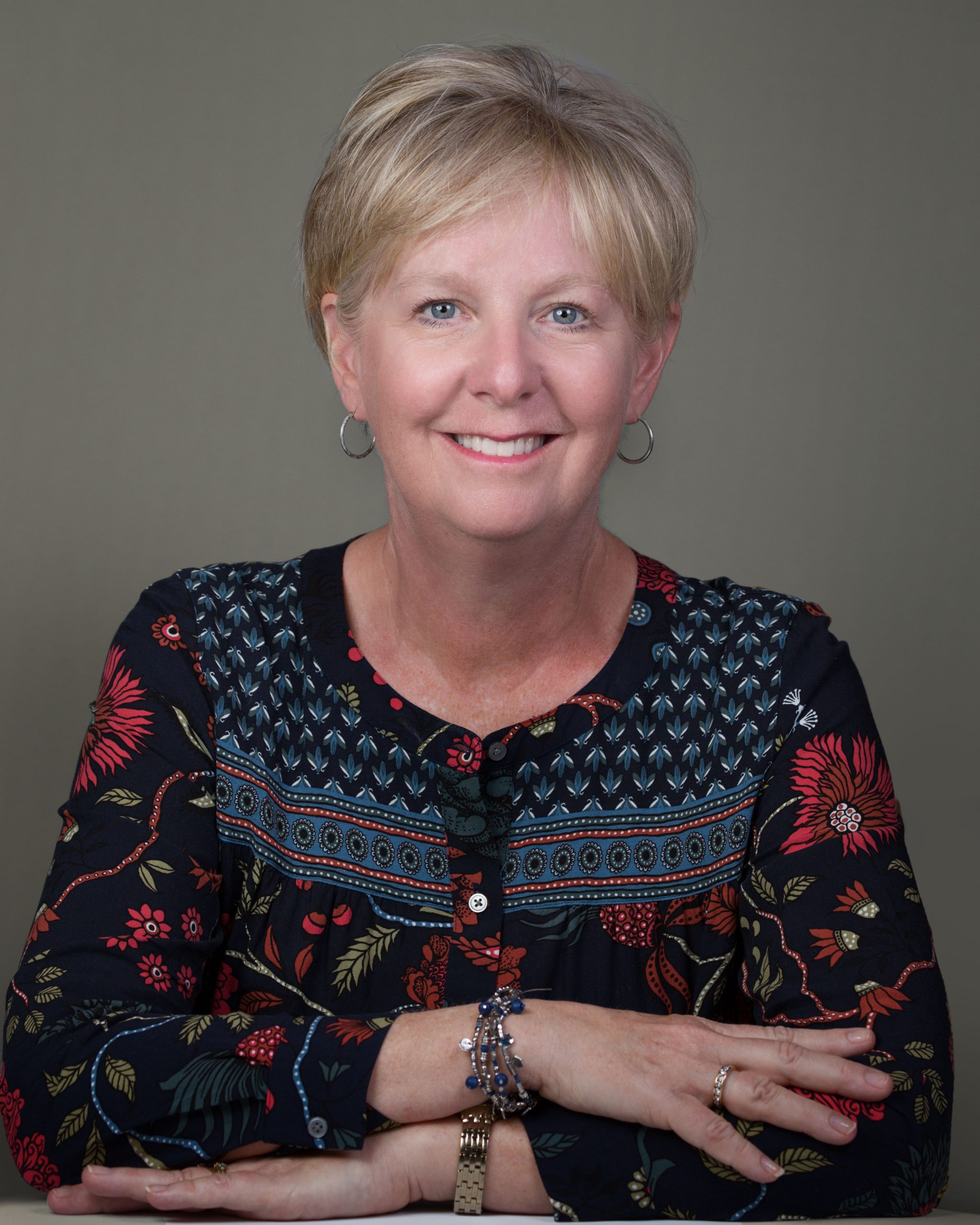
Colleen Kole is “an artist who uses textiles.” She hand dyes her fabrics – makes her own materials – and with them creates abstract, contemporary quilts. Colleen is one of a growing number of studio artists who are exploring the quilt as an art object, and pushing it out of the home and into galleries and museums. This interview took place in December 2020. It was conducted by Sarah Bearup-Neal, GAAC Gallery Manager, and was edited for clarity. Colleen lives in Leland and Grand Rapids, Michigan.
[image courtesy Bonnie McCaffery]What draws you to the medium in which you work?
I’ve always been drawn to create with my hands. I was a physical therapist, so I used my hands to diagnose a patient — along with visual skills. I’ve always loved using my hands to work with, and that just translated to art so well after I retired [in 2007]. Prior to that, I didn’t have any art influence in my life. I didn’t have anyone in my family who was an artist. I didn’t really know what being an artist was. I didn’t grow up painting or drawing. I always was intrigued by it ….. [Her interest in art started when] we lived in Columbus, Ohio, by Amish quilt makers [living in the vicinity]. I started going to flea markets and picking up [quilt] squares that weren’t finished, and felt a desire to put them together by hand. I did that for many, many years …. It was so rewarding to stitch something by hand. Fast forward to having kids, and I thought, “Wow, this is crazy, I’ll never finish anything.” I went to the Vermont Quilt Festival in 2006 and picked up a book by [Ohio artist] Nancy Crow [1] ….. I remember sitting there at a picnic table and thinking, “Wow! Wow! I want to create like this. I want wild, vivid colors. I want improvisational design” — once I figured out what she meant by that term. “I want to go study with her.”
The quilts squares you bought from the Amish and at flea markets were probably very tradition designs.
Yes, except for I found ….. a bag of [squares from a flea market] that [the maker] obviously had not used a pattern for. It looked like she’d cut the pieces by hand because the edges in back were jagged, and she put them together in an improvisational way. That made the bridge to Nancy Crow-style quilting ….. I had no idea of [Nancy Crow] then. I actually moved away from Columbus [to Michigan in 2004] before I found her ….. I started studying with Nancy in 2007.
Did you attend art school or receive any formal training in visual art?
I applied twice to art school, and twice I decided not to go — this was after I retired from physical therapy. I got involved with classes, workshops, and found the beauty in intense workshops [at Nancy Crow Timber Frame Barn retreats] ..… I decided I to use whatever money I’d spend on college to take workshops, and I probably took 20 weeks of classes there. I studied with Nancy. I studied with Carol Soderlund [2]. I studied with Claire Benn [3]. David Hornung on design [4]. Whatever I felt I was missing I sought a teacher I could work with ..… Now I’ve found the beauty of on-line classes, which I can do at home .…. It inspires me to work with other people and to learn different aspects of art that [will] inform my textile [practice].
By going the workshop route, you found specific people to help you address your needs, as they arose — and that’s different from going to college.
Correct. I struggled with starting over in college. Not that I didn’t need the skill set … But I just wanted to work with textile.
What is it about textiles that is such a passion for you?
A quilt is something we ….. associate with comfort, warmth, clothing. It’s so basic to our needs ….. It intrigues me that you can manipulate it so many different ways: to be a utilitarian object or an art object — something that’s hung on the wall for people to appreciate ……
How did workshops help you learn the craft and skill behind your medium?
Nancy assumes, when you take her class, you know how to sew, you know how to piece, you know the technical aspects behind [quilt making]. She’s giving you design exercises, and ….. assignments that might be done in a day ….. or a week. You are expected to produce it — much like you’d have to do in college. She would work us through [the assignments]. She’d help us critique it so we would learn how to critique it ourselves … and we’d have to learn how to present, in class, as well. I [consider this] my master’s degree in art, over six or seven years. I can’t think of a better place to do it, with people who are passionate about your same medium versus being in an art college where you might have one fiber artist and 20 other kinds of artists. That’s not to say I don’t respect what I’ve gotten in a painting class ….. I use other mediums to learn more about [visual] art. And it helps me figure out where my textiles belong, or don’t belong, in the fine art world.
Most people understand the quilt as an object that’s inextricably connected with the home, with utilitarian comfort. Talk about the ways you’ve been able to help people develop a new and broader understanding of the quilt as you’re working with it, beyond its domestic context.
I feel the best way I can do this is to be at an exhibition, answering peoples’ questions. Most people are stunned to see a quilt on the wall. I just got done with a solo exhibit [October 16 -17 at the Old Art Building, Leland, Michigan]. And, even in the midst of COVID, people were enthralled to see color, to see pattern, to see texture, to see a design hung on the wall in the form of a quilt. They had so many questions: Why is a quilt on the wall? Why do you feel it’s a piece of art? They had great questions. And, by talking with people, by entering exhibits, by entering ArtPrize [5] — I was in ArtPrize five times — I always jumped on the volunteer opportunities to talk [to visitors] about what I do and how I do it. Would you like to give a demonstration? Would you like to give a small workshop? I love showing people what I do because it’s different.
Many people believe that Capital “A” Art is only painting, sculpture and architecture. It often comes as a revelation that fabric is used the same way as paint is. All the same principles about color and design apply.
I am using those same principles: Is my design too heavy on one side? Am I using line in a manner that conveys something? So, I’m using all the design criteria that any other artist would use to look at it to see if it’s a composition worth completing. Sometimes they don’t all get finished, and that’s OK. You’re working through to get to a place you want to be next …..
Describe your studio/work space.

I’ve worked in lots of different places and spaces. What I need to work with is my sewing machine, a cutting table, a rotary cutter, thread; and what I really need is my 4ft x 8ft design walls — I call them “walls” but they’re actually 2-inch insulation panels that you’d use in home building, covered in flannel. I love having two of them side by side. I can work really large … or I can have two pieces playing off each other. I really like having two pieces [to] work with at once. If I get stuck by one I can move onto another. I have the luxury in Grand Rapids of having a big, finished space above my garage ….. but do I need all that space to create? Heck no. My sewing machine gets packed up when we go on vacation. I can work anywhere I can put a machine on and off a table ….. When we had a second home in Vermont, I had an old barn where I dyed my fabrics outside ….. I’m finding the water’s really hard, up north in Leland, so I’m dyeing most of my fabric in Grand Rapids.
Talk about making your own materials. Why are you going to the trouble versus ordering fabric from a commercial supplier?

First of all, I feel like I can get a wider range of colors. I can manipulate the dye recipes to ….. create my own palette of colors. I can dye a gradation of fabrics from very, very light to very, very dark — a 10-value range of fabrics ….. I love that process of the dye hitting the cloth. It’s a really enjoyable part of the process even though it’s exceedingly time-consuming .…. Normally I’d dye a couple hundred yards of fabric a year. That’s a lot of fabric ……
Do you work primarily in solid colors?
I have taken some surface design classes …. but I feel like surface design is a whole other thing I could get caught up in, and go down a rabbit hole, and not come back to my solids. I feel very comfortable in solids. Love them.
What themes/ideas are the focus of your work?
I have a couple series I’ve worked on. My first series was called Roof Lines. It all started when I was super intrigued, interested, obsessed with the conservatory building at Meijer Gardens [6]. The architecture of that building intrigued me — the way the light played off the beams, the different roof lines, how that building looked so natural in its setting. I started off with that and became in tune to roof lines of a country village, of a little cottage tucked into a mountain, the roof line of a cottage on a lake. There’s about 25 pieces in that series. Did I wake up one day and say I want to do that? No. I just stumbled on it ….. Occasionally one or two pieces a year just pop out, and they’re “Roof Lines” again ….. They’re shapes that are recognizable to other people, too, and they relate to them — I never really thought about that as I was making them.

Time Fragments [is another series]. It’s a tie-in between memory loss and the fragments of time that people use or lose over time. That’s my favorite to still work with. It a simple motif that can be altered over and over again, skewing it, stretching it out, pulling apart …… but there’s a recognizable line pattern that helps to carry that out.
Is there any memory loss in your own life that prompts this?
Sure. My time as a physical therapist working with geriatric patients with memory loss … working with patients with brain injuries who couldn’t remember the process of doing a task. It’s interesting to me how my old career meshed with my new career to inspire a whole other series.
What prompts the beginning of a project or composition?
Just the fact I have a white [design] wall that needs to be filled. If you’re asking me if I pre-plan a project, I don’t. Some people sketch, and they have ideas and measurements and colors. For me a project starts when I go to my fabric stash, and I start pulling a palette and I pin it up on the wall. I take a look at it in black and white. I take a look at it in color. I remove, I add, I subtract, over and over again until I find a palette I like working with. And maybe I’ll say, “Let try a ‘Roof LInes’ piece today”; or, let’s just join shapes ….. My “sketches” are done on the wall. My sketches aren’t generally done in a sketch book, although I use one. So my sketch could start out in black and white [fabric] on the wall. I’ll sew it together and see how I like the figure-ground relationship, what’s the foreground, the background, do I want to change anything. And then I add color to the next “sketch” and start building from there.
And you can see this more easily in black and white?
Yes. It’s like a drawing. You’re making a sketch in black and white in a sketch book. I’m doing the same thing — just doing it on the wall.
What’s your favorite tool?

My rotary cutter. I use it like a pencil. I don’t use a ruler with it. Sure, I use a ruler at the end to square things up, but I have trained myself to work with a rotary cutter like pencil. I’m slicing through that fabric making the shape I want it to be …..
How do you come up with a title?
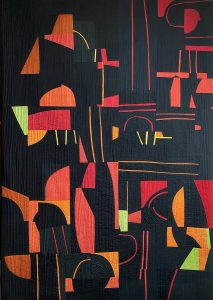
That’s my hardest thing. I think the most on it, and I generally think about it while I’m working on [a composition], and it just comes to me — like the piece I made for the [GAAC’s] Power Tools exhibition [September 11 – November 5, 2020]. I just remember saying “Neon lights, that night of chaos.” ….. I just remember writing that title down. It comes to me generally as I’m working on it: OK, this is the title of my piece, let’s go with that.
What’s the title’s job?
To relate in some way to the viewer what the artist’s intention was.
When did you commit to working with serious [professional] intent?
I think, through the process of taking workshops. When you have a group of people progress through the same exercises and workshops …… When I saw how much those artists work improved or changed or developed, and their voice became recognizable, I thought I’m going to have to work that hard if I’m going to really find my voice. And, I started working anywhere from 20 to 40 to 50 hours a week in my studio, like it was a job …..
What kind of time do you put into your practice now?
The pandemic really killed me off; that’s why I signed up for [an on-line] sketchbook course, so I have some rhythm to my day …… On a good studio week I would be up at 8 am and work for six hours in the studio, then move onto everyday life chores. It also depends on what I’m making at the time. If I’m really into a piece I can pull some of those Nancy Crow Workshop hours and work for 60 hours a week just because the piece is moving along ….. Or if there’s a big exhibition coming along, but I don’t necessarily create for an exhibition. I don’t say, “Here comes Quilt National [7] in two years; I need to just create my pieces specifically for that exhibition.” ….. I generally just keep working ….. It’s my career. It’s my job. It’s what I do.
….. After I do a big piece [e.g. 8ft x 8ft] there’s down time. Your creative brain needs rest. I’ve learned not be panicked by that, but just to be peaceful and do so other basic tasks in my studio. It’s OK not to have that intensive creative energy. It’s OK to have those lulls.
What role does social media play in your practice?
I do like to use social media to inform people about what exhibits I might be in, what I’m working on. It’s nice to have a community of people out there that share your interests, but it’s also a way of educating people about what you’re doing. So I use Instagram. Facebook. But I primarily use Instagram. It’s an easy way to share your work and get it out there to a large volume of people.
Is it a way to market your work?
No. I wish I could say I’m a great marketer but I’m not. I’ve actually had someone buy a piece by posting it, but I don’t do it for that purpose. It’s more of a sharing.
What do you believe is the visual artist’s role in the world?
I feel that it’s a way of: a.) sharing with the viewer how the artist see thing; b.) the beauty in the world through color, pattern, texture, repetition, theme. I’m pretty intent on sharing the beauty of the world. That’s not to say that some of my pieces don’t have a strong statement about [social] or political themes, but that isn’t the primary part ….. To me, the world really needs to see color and beauty right now, and I’m OK with that. I’m pretty passionate about that. I’m even more so intent on that after seeing peoples’ reaction to art in October [at her Old Art Building exhibition] when they hadn’t [directly experienced] art since [the] February [COVID shut down]. I was thrilled to see I could give them little bit of peace, a little bit of happiness and joy through [directly] viewing art. I don’t think I’d taken that seriously — how important that is to people …..
How does the world find its way into your work?
Travel — primarily throughout the United States is what I’ve done. We lived in Vermont, so mountains and meadows and nature. I love my garden, so color from my gardens. The bright, deep, rich colors in nature. The patterning you see in nature when you take a walk. The patterns that the waves make on the beach. The patterns that the rocks make along the shoreline.
Some of your work is topical.

Oh, Beach Daze. When I visit an area, I want to find out what’s happening in that area of the world — weather-wise, climate change-wise. And I was so disturbed by the Red tide [8], and how it changed the tourist industry, how it changed the ability for people to be outside and breathe the air outside, by man’s neglect of taking care of the chemicals he added to the water. I was so disturbed by the fact we might not be able to go to the beach and see all the umbrellas up, and have this wonderful time breathing fresh air outside in the sunshine ….. I didn’t make that piece because I was disturbed by it. That piece was one I was already working on, and how it related to what I was seeing …..
How does living in Northern Michigan inform and influence your creative practice?
My primary residence is in Grand Rapids, Michigan. We bought a second home in Leland two years ago, knowing little about Leland when we bought the house. We just found a house in town that was close to water and said, “OK.” Exploring somewhere new and different always informs your work, whether it be moving your desk to a coffee shop or moving homes ….. My colors are changing a bit from what I was using before. Little bit deeper blues and greens. I feel like [Northern Michigan] is just starting to impact my work ….. There’s a community of artists living in Northern Michigan, and I’m just starting to meet them. Artist appreciate it up here …… It’s another source of inspiration, to see how they work as career artists, to see how they’re informed by their environment, to share exhibits with them, meet them at exhibits.
Do you think you’d be creating different work if you didn’t live in Northern Michigan?
No. I don’t think so. There’s lots of landscape artists in Northern Michigan. I haven’t found a lot of abstract artists up here ….. I want to continue my abstract work, and I feel the way [Northern Michigan] will influence me is my sense of color. More earth tones. But maybe not. Maybe I just stick with what I’m doing. I’m open. But because of COVID ….. It’s not like I’ve had a chance to explore like I would have normally ….. I don’t feel like my work hasn’t gotten respect because it’s not [about the] landscape. It’s a subject that just familiar to this location. It’s beautiful. What’s not to like about the landscape. It’s why we’re here.
So, the way Northern Michigan is influencing your practice is how your palette is changing. You’re bringing in more of the colors that are indigenous to this part of the world. What was the palette you worked in before you starting spending so much time up here?
Deep jewel tones. Bright garden colors. I spent my summers in Vermont — yes, there’s rolling hills, there’s cows, there’s meadows, but people love their gardens there because the winters were so long. I find that people here, their gardens are hidden by long driveways and the woods, or their proximity to the lakes, so you’re not getting a peek into what that person’s garden might look like …..
You said you didn’t know any practicing studio artists when you were growing up.
Yes. That’s true. But I was on the [high school] yearbook, and would help the photographer develop film ….. To see the image hop out on a photograph is probably akin to how I feel when I dye my fabrics and the color is revealed on the cloth .…. That led me to believe I might have a little creative spirit in me.
Who has had the greatest and most lasting influence on your work and practice?
Probably Nancy Crow, and the teachers she has lined up to teach at her facility. They’re top notch ….. Nancy’s knowledge of the art behind quilt making as a medium is unparalleled because she has worked in this way for so many years. She’s a natural colorist, so she can point you in the right direction if you don’t have a clue about color, and why it’s not working in your composition. She’s blunt. She’s direct. And some people have a hard time dealing with that, but I don’t have time to waste. I would much rather know my weaknesses and work on them than not know them at all. I like her directness. I like her work ethic. She doesn’t stop. She keeps going. She keeps seeking improvement.
To whom do you go when you need honest feedback about your work?
There are three artists that I’ve grown up with in the last 10, 12 years, who are working as I am. If I get really stuck, I can send them a photo ….. and have them take a look at it and critique it for me. They give me honest feedback without giving too much of the secret away of what I have to work on myself. They give me honest feedback, but I don’t want the whole answer on how to fix my composition. I want to figure it out myself, so if they just give me enough clues ….. I don’t want anyone to re-do my art for me. I want to be able to figure out a solution to the problem.
What’s the benefit of that?
So I can grow as an artist.
What is the role of the exhibition in your practice?
I do enjoy exhibiting my work. It’s a primary way to get my artwork out there. It’s a great way to see how your medium fits into the fine art world. I’ve learned so much being part of a multidisciplinary art exhibit versus just a fiber exhibit …… To see your work among other media, it either fails or it shines, and only because it was a worthy design or composition to begin with — regardless of what medium it is: How does it stand as a piece of art?
Footnotes
1: Nancy Crow is a visual artist. She is a pioneer and leading figure in the modern quilt movement of the 1970s and 1980s, and is also known for her development of certain techniques to allow more spontaneity and expression. She resides and teaches in Baltimore, Ohio. Nancy Crow, an illustrated survey of her work, was published in 2006.
2: Carol Soderlund has taught the art and technique of hand dying for more than three decades. She teaches through the US and Canada.
3: Claire Benn lives and works in Surrey, UK. She is also an author, curator and educator in art textiles.
4: David Hornung is a painter, former quilt maker and professor of art. He is currently on the faculty of Adelphi University on Long Island, NY.
5: ArtPrize is an international art competition and festival in Grand Rapids, Michigan. It was founded in 2009 by Rick DeVos, the son of Republican gubernatorial candidate Dick DeVos and former United States Secretary of Education Betsy DeVos.
6: Frederik Meijer Gardens is a 158-acre horticulture and sculpture park in Grand Rapids, Michigan. It opened in 1995.
7: Quilt National is a juried biennial exhibition of contemporary quilts first held in 1979. The primary exhibition is held at the Dairy Barn Art Center in Athens, Ohio in odd-numbered years.
8: Red tide is the term used for harmful algal blooms that occur when colonies of algae — simple plants that live in the sea and freshwater — grow out of control while producing toxic or harmful effects on people, fish, shellfish, marine mammals, and birds.
Learn more about Colleen Kole here.
Sarah Bearup-Neal develops and curates Glen Arbor Arts Center exhibitions. She maintains a studio practice focused of fiber and collage.
